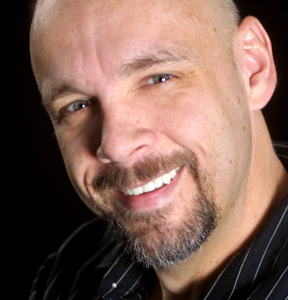Editorial
Front Page - Friday, August 21, 2009
The Critic's Corner
David Laprad

Filmmakers have done an exhaustive examination of World War II and Vietnam, but few writers and directors have touched Iraq or Afghanistan. Most people think that’s because the wounds sustained in those wars are still bleeding, but I believe it’s because Hollywood still doesn’t know what we’re doing over there.
Even though “The Hurt Locker” doesn’t try to figure it out, as modern war dramas go, it’s one of the best.
Instead of trying to tell a story about the Iraq War, writer Mark Boal and director Kathryn Bigelow use the conflict as a means to explore the mindset of a particular kind of soldier, embodied in Staff Sergeant William James, the leader of an elite Army bomb squad. What are his reasons for joining the military? How is he able to go into battle knowing he might die? Why does he sign up for more combat after returning home?
You won’t find love of country, earning money for college or gaining life experience on his list of reasons. His motivations had more to do with the kind of person he is.
Regardless of why James is there, it’s his job to lead Sergeant Sanborn and Specialist Eldridge into Baghdad to diffuse explosives. Two things hit me during these scenes.
One, our soldiers are operating in one of the most hostile parts of the world, a broken shell of a country in which death can come from any direction, at any time and by unconventional means.
And two, our enemy is faceless and hidden; he could be anyone and anywhere. So when a male civilian materialized in the middle of a broad street during a tense mission, I excused Sanborn for reacting in a less than cordial manner.
Sanborn just wants to go home, but James is more complex. He ignores protocol and takes outrageous risks, but he loves his job and is good at it. At times, he seems almost callous, but when Eldridge breaks down during a mission, James pulls the soldier through with remarkable poise. He also shows compassion to an Iraqi boy. I believe Bigelow is saying it’s not easy to pigeonhole soldiers with generalizations.
I believe the war attracted James rather than produced him. When he returns to base, he gets drunk, persuades Sanborn to repeatedly punch him in the stomach and listens to death metal. This is just who he is. Boal and Bigelow aren’t saying James represents every American man and woman stationed in Iraq; he’s simply one of the many different kinds of soldiers one might encounter in any war.
Speaking of Bigelow, her work behind the camera is outstanding. During the missions, she dials up the heat and brings the tension to a boil without ever letting it spill over. And she cleverly focuses on the U.S. soldiers without revealing much about their surroundings or showing more than brief glimpses of the insurgents. This forces you to stay with the soldiers and experience their mounting paranoia. Bigelow makes you go through it with these guys.
She also has an eye for good imagery. In one scene, she shows the heat rising off the desert as Sanborn looks through a sniper scope and desperately tries to spot an enemy. In another, James diffuses a bomb only to find a wire that splits into several strands. As he pulls the central cord, eight more explosives emerge out of the sand in a perfect circle around him.
I can’t imagine what it’s like to live in Iraq and Afghanistan, where bombs rip women and children apart while they shop for food. It’s even harder to comprehend why Muslims are killing each other. I doubt it’s possible for someone in the West to fully understand the conflict in that part of the world.
I was going to see “G.I. Joe” after “The Hurt Locker,” but I’d temporarily lost my appetite for popcorn. Instead, I went outside and took a deep breath, glad to be living in relative safety. As I looked around, I remembered what astronomer Carl Sagan wrote after looking at a photograph Voyager 1 took of Earth from across space:
“The Earth is a very small stage in a vast cosmic arena. Think of the rivers of blood spilled by all those generals and emperors so that in glory and triumph, they could become the momentary masters of a fraction of a dot. Think of the endless cruelties visited by the inhabitants of one corner of this pixel on the scarcely distinguishable inhabitants of some other corner. How frequent their misunderstandings, how eager they are to kill one another, how fervent their hatreds.”
“The Hurt Locker” opens with the words “War is a drug.” And that’s what gets James up in the morning. If war is an adrenaline rush to which soldiers like James are addicted, what hope is there for peace?
E-mail David Laprad at dlaprad@hamiltoncountyherald.
com.
|
|